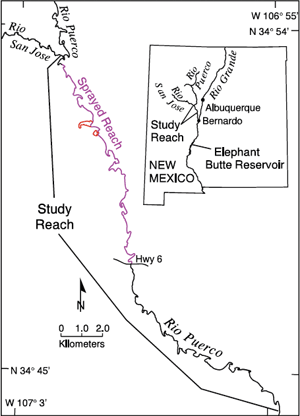
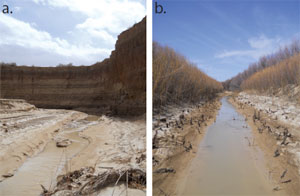
Rio Puerco channel
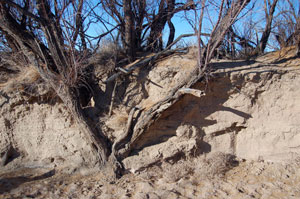
Buried tamarisk trunks
|
Rio Puerco flooding and erosion project
The Role of Large Floods and Riparian Vegetation in Shaping River and Floodplain Morphology
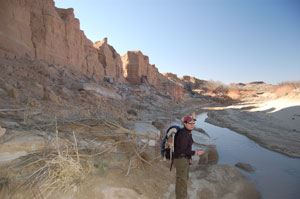 Investigators and partners: Investigators and partners:
- Greg Tucker, CU Boulder
- Mariela Perignon, PhD candidate, CU Boulder
- Eleanor Griffin, US Geological Survey
- Jonathan Friedman, US Geological Survey
- Kirk Vincent, US Geological Survey
Large floods can strongly impact river valleys. A powerful flood can alter channel geometry and conveyance capacity, erode or bury riparian vegetation, enhance or degrade the fertility of floodplain soils, and in extreme cases even change the entire channel pattern. A fundamental goal in fluvial hydrology is to understand these impacts at a quantitative and ultimately predictive level.
Currently, our ability to forecast potential flood impacts is limited by a lack of good test cases, and a lack of fully coupled morphodynamic models. We are addressing this knowledge and technology gap by developing a numerical model that couples flow routing with the physics of erosion and deposition on the timescale of a major flood. We are testing this coupled model using a unique data set from the Rio Puerco in New Mexico.
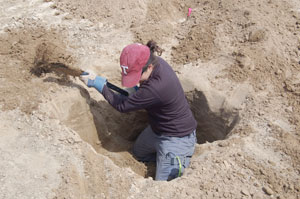 Mariela excavates the floodplain
In 1926, saltcedar was introduced to the Rio Puerco watershed to limit erosion and prevent the infilling of Elephant Butte Reservoir. In September 2003, herbicide spraying along a 12 km section of the Rio Puerco killed all woody vegetation. A major flood 3 years later caused extensive erosion and channel widening along the devegetated reach; the eroded material was deposited downstream where living vegetation prevented erosion. Because the vegetation was the only factor that varied along the middle reach of the river, the 2006 Rio Puerco flood makes an excellent natural experiment for testing coupled hydraulic-morphodynamic flood models.
|





 Investigators and partners:
Investigators and partners: